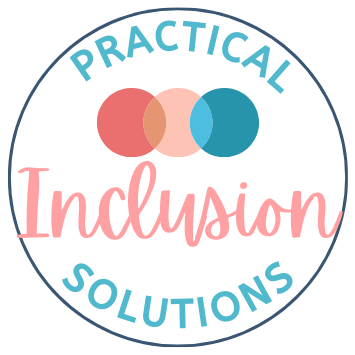Classroom Brain Breaks
March can be a tough month for both teachers and students. As the saying goes, March comes “in like a lion and out like a lamb.” This rings true not just for the weather, but also for classroom dynamics. By this point in the school year, both students and teachers can feel drained, overwhelmed, and on the edge of burnout. If this sounds familiar, it might be time to introduce—or revive—classroom brain breaks. These brief pauses could be just the “medicine” your classroom needs to survive the rest of the year. Just as we’ve shared tips for modifying curriculum and implementing positive behavior supports in the classroom, today we are here to help you include classroom brain breaks easily into your routines.
What Are Classroom Brain Breaks?
In short, classroom brain breaks are short, purposeful breaks where students (and even you!) step away from intense mental focus to recharge. These breaks can include physical movement or simple activities that temporarily shift the cognitive load, helping reset both the mind and the body.
Why Are Brain Breaks Important?
Research shows that brain breaks offer several benefits for students. Here’s why they should be a regular part of your classroom routine:
- Improved Self-Regulation and Emotional Awareness
Brain breaks teach students valuable self-regulation skills. They learn to recognize the signs of frustration, overwhelm, or anxiety, and can take a break before those feelings turn into meltdowns. This fosters emotional intelligence and helps students manage their emotions in real-time. - Stress Reduction
Brain breaks help reduce stress and anxiety. Prolonged stress can trigger a fight-or-flight response, making it difficult for students to focus or absorb new information. A quick break helps students calm down and return to learning with a clearer mind. - Boosted Confidence and Grit
Taking a break might seem counterintuitive when trying to power through lessons. But, in reality, brain breaks promote perseverance. When students recharge, they’re more likely to tackle challenges with a positive mindset, boosting their confidence and ability to keep going.
How Can I Find Time for Classroom Brain Breaks?
As a teacher, your to-do list is endless. Between lessons, assessments, and classroom management, it may feel like you can’t afford the time for brain breaks. But they don’t need to be long or disruptive. Brain breaks can be quick, simple, and incredibly effective. In fact, they may help students focus more and make your lessons run more smoothly.
To help, here’s a list of easy, quick brain break ideas you can try without disrupting your day.
10 Classroom Brain Break Ideas:
- Yoga
Yoga is a great way to help students relax and reset. Pick a few simple poses, such as child’s pose or downward dog, and hold each for 30 seconds. You can also follow a quick YouTube video for extra guidance.
Some of our favorites:- Cosmic Kids Yoga
- P.E. with Mr. G Yoga Videos
- Video Movement Breaks
Sometimes, all students need is a good, old-fashioned movement break. Search for a themed “movement break” video on YouTube (like “Frozen Movement Break” or “Superhero Movement Break”) for a fun way to get kids moving.
Some of our favorites:- P.E. with Mr. G
- DannyGo
- Dance Party!
Dance breaks are a fun way to get everyone moving and laughing. It’s especially popular with younger students, but older ones might surprise you! Start a dance party to lift everyone’s spirits.
Try:- GoNoodle
- DannyGo
- Cardio Drumming
- Mazes
Some students don’t enjoy traditional movement breaks but can still benefit from cognitive breaks. Have students complete a maze—this shift in focus helps them reset, problem-solve, and return to their tasks with new energy. Check out our free customizable mazes here! - Go for a Walk
A change of scenery can work wonders. Send students on a short walk to a designated “turn-around” spot, such as a water fountain or classroom number. Walking allows the brain to reset and lowers stress levels. Want extra movement? Add movement break cards in the hallway to complete while on their walk. - Would You Rather
Want a quick mental break that’s fun? Play a round of “Would You Rather.” This simple game allows students to engage in conversation without thinking about school. Bonus: you can tie it into lessons.
Example: “Would you rather live in a swamp or a desert?” (for a science lesson on habitats). - Gross Motor Exercises
Gross motor activities can increase attention and concentration, as well as regulate energy levels. Print out a list of movements and hang them in the hallway. Students can take breaks as needed, doing activities like jumping jacks or stretching. - Coloring/Drawing
Some students benefit from a more therapeutic brain break. Offer coloring sheets or have students create their own drawings. This creative outlet helps students unwind and recharge. - Breathing Exercises
Everyone can benefit from a moment of deep breathing. Teach students breathing exercises they can use throughout the day to calm their nerves and reset their focus. Even just 1-2 minutes can make a difference. - Jokes for Kids
Laughter is a great stress reliever. If you notice your classroom feeling tense, search “jokes for kids” on Google and share a few laughs. It could even tie into what you’re learning! For example, a joke about history when studying the American Revolution.
Give Brain Breaks a Try!
Classroom brain breaks don’t have to be long or complicated. By integrating these short, refreshing activities into your classroom, you can reduce stress, improve focus, and boost energy. Ready to give it a try? Start today, and let us know which classroom brain break works best for you and your students! For more inspiration, check out these other blogs with classroom brain break ideas:
🤸Gross Motor Movement Breaks for the Classroom by OT Mom
